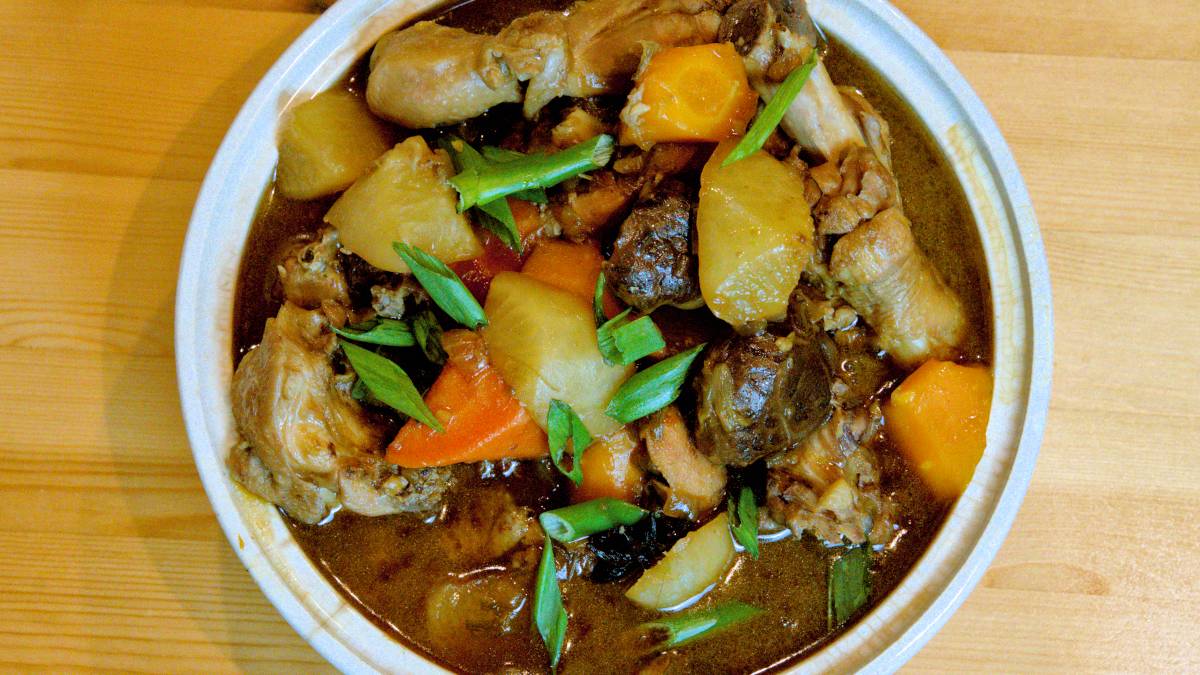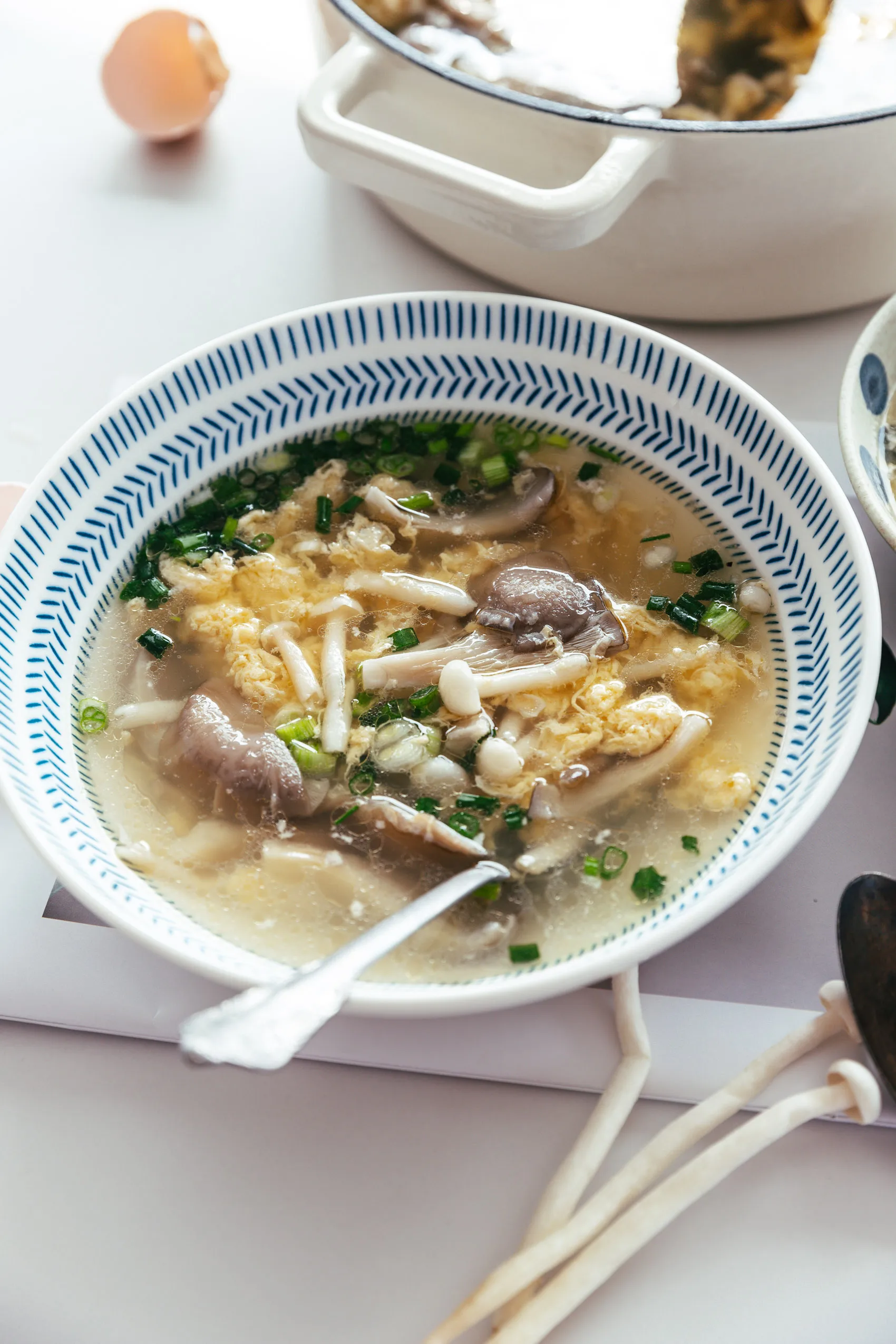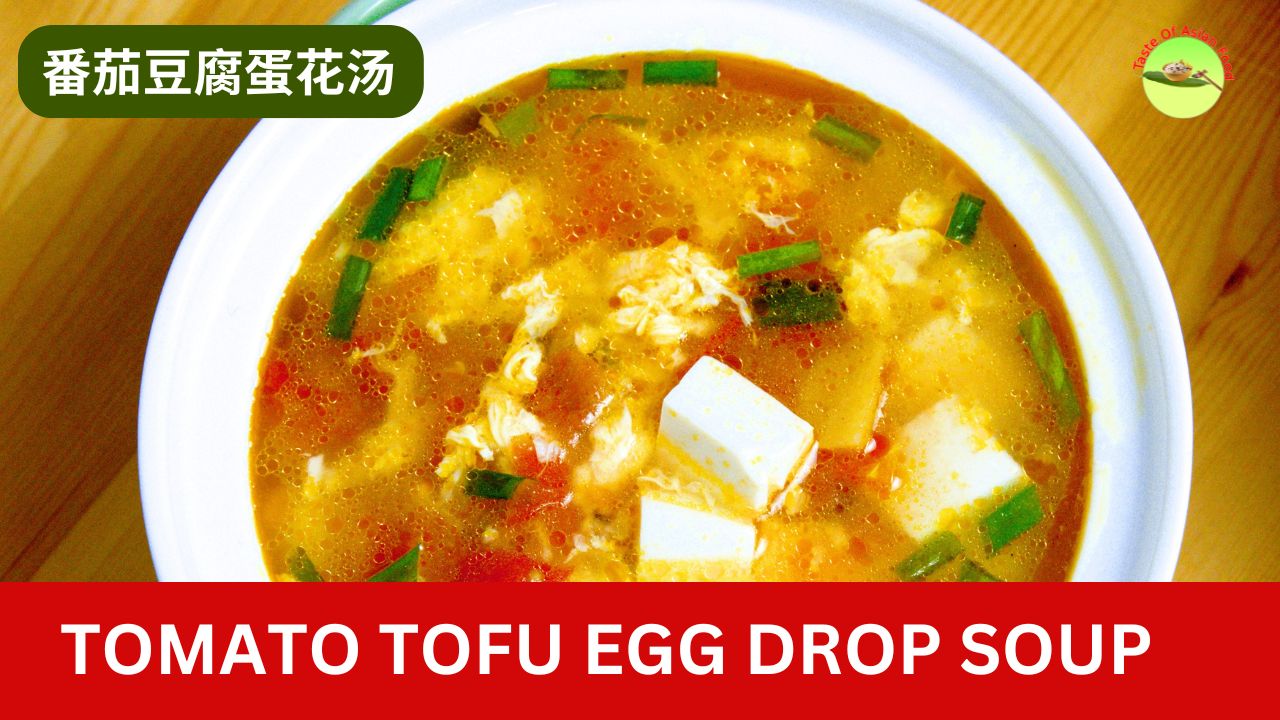Have you ever savored a dish that lingered in your thoughts long after the last bite? That’s precisely how I feel about this Cantonese-style one-pot Chicken Stew.
This recipe is not only straightforward to prepare—thanks to the one-pot method that ensures minimal cleanup—but it also features tender chicken infused with rich flavors. The daikon radish soaks up the savory gravy, creating a comforting dish that makes me feel like a culinary expert, even on my laziest days.

Note: This post may contain affiliate links. Please read my privacy policy for more info. I may receive commissions for purchases made through links in this post. As an Amazon Associate, I earn from qualifying purchases.
Main Ingredients for the Chicken Stew
- Bone-In Chicken Pieces: Bone-in chicken adds depth to the braising liquid, which is essential in Cantonese cooking.
- Dried Shiitake Mushrooms: These contribute a rich, earthy, umami flavor.
- Garlic, Ginger, and Green Onions: These aromatics form the base of many Cantonese dishes, providing a fresh and fragrant foundation.
- Daikon Radish: This vegetable absorbs the broth’s flavors and becomes tender and sweet.
- Shaoxing Wine: This traditional Chinese cooking wine adds subtle depth to the dish.
- Dried Tangerine Peel: A classic ingredient that imparts a citrusy aroma and balances the stew’s richness.
- Light and Dark Soy Sauce: Light soy sauce adds umami, while dark soy sauce provides color.
- Rock Sugar: Used in Cantonese cooking to subtly sweeten and balance flavors.
How to Prepare the One-Pot Chicken Stew
- Soak the dried shiitake mushrooms in hot water for 30 minutes or until softened. Once softened, slice them and reserve the soaking liquid, straining it to remove any grit.
- Pat the bone-in chicken pieces dry with paper towels. Adjust the cooking time if using chicken breasts or boneless pieces to prevent overcooking. Season lightly with salt and white pepper.
- Chop the vegetables: Slice the onion, smash the garlic cloves, and cut the ginger into thick coins. Peel and cut the daikon and carrots into large chunks. Cut the green onions into 2-inch pieces.
- Heat vegetable oil (or peanut oil) in a large skillet or clay pot over medium heat. Sear the chicken until golden brown on both sides (about 3-4 minutes per side). Remove the chicken and set aside. Add the sliced onion, smashed garlic, and ginger coins to the same pot. Sauté for 2-3 minutes until fragrant.
- Pour some water into the pan to deglaze it, scraping up any browned bits from the bottom. Transfer this to a pot. Add the chicken, soaked shiitake mushrooms, carrot chunks, and daikon chunks.
- Soak the dried tangerine peel in hot water for about 20 minutes or until soft. Use a sharp knife to scrape away the pith to avoid bitterness in the stew. Add the star anise and dried tangerine peel to the chicken.
- Add the chicken, soaked shiitake mushrooms, carrot chunks, daikon chunks, reserved mushroom soaking liquid, dried tangerine peel, star anise, light soy sauce, dark soy sauce, oyster sauce, wine, rock sugar, salt, and pepper. Stir to combine.
- Bring the stew to a boil, then reduce the heat to low. Cover and simmer for 30-40 minutes or until the chicken is tender and the vegetables are soft.
- Taste the stew and adjust the seasoning if necessary. During the last minute of cooking, stir in the sesame oil. Thicken the gravy with a cornstarch slurry.
- Ladle the stew into bowls and serve hot with steamed jasmine rice. Pour the stew over the rice for a complete meal with added warmth and flavor.




Tips to Make the Best One-Pot Chicken Stew
- Use bone-in chicken pieces (thighs, drumsticks, or even a whole cut-up chicken) for depth and richness in the braising liquid, essential for Cantonese stews.
- Sear the chicken well to develop extra flavor, but avoid overcooking it during the simmering process to keep it tender.
- After soaking the mushrooms, reserve the soaking liquid and strain it to remove any grit—this liquid is packed with flavor and should be added to the stew.
- Simmer the stew on low heat to let the flavors meld without vigorously boiling, which can make the broth cloudy and the chicken tough.
Cooking with a Multicooker
Using a multicooker (like an Instant Pot) for your Cantonese-style One-Pot Chicken Stew simplifies the process and enhances flavors by locking in moisture and aromas. Here’s how to adapt the recipe:
- Use the Sauté function to sear the chicken. Heat the oil, then brown the bone-in chicken pieces on both sides. Remove and set aside.
- Use the same function to sauté the onion, garlic, ginger, star anise, and dried tangerine peel until fragrant.
- Add the Shaoxing wine to deglaze the pot.
- Secure the lid and Pressure Cook the chicken for 15 minutes.
- Open the lid and add the sesame oil. Let the stew sit for 2-3 minutes to allow the flavors to meld.
- Taste and season with salt and white pepper if needed.
Note: Multicookers retain more moisture, so consider reducing the chicken broth by one-third to avoid a watery stew.

Storing and Reheating Leftovers
This Cantonese-style One Pot Chicken Stew is even more flavorful after sitting overnight, as the ingredients meld together beautifully. The tender chicken and vegetables absorb the rich broth, enhancing the overall taste.
- Refrigerate: Allow the stew to cool to room temperature, then transfer it to an airtight container. Store it in the refrigerator for up to 3 days.
- Deep Freeze: While you can freeze the stew, be aware that the texture of daikon and other vegetables may change after freezing. The high water content in daikon can lead to a softer texture upon thawing, so freezing is generally not recommended.
- Reheat: Gently reheat the stew on the stovetop over low heat to avoid overcooking the chicken or vegetables. If the broth thickens too much, add a splash of water or chicken broth to loosen it.
For your next meal, consider making a larger batch, as this stew only improves with time. Enjoy your delicious creation!
What to Serve with Chicken Stew
Here are some recommendations for side dishes to complement your chicken stew. You can find the recipes by clicking the links:





